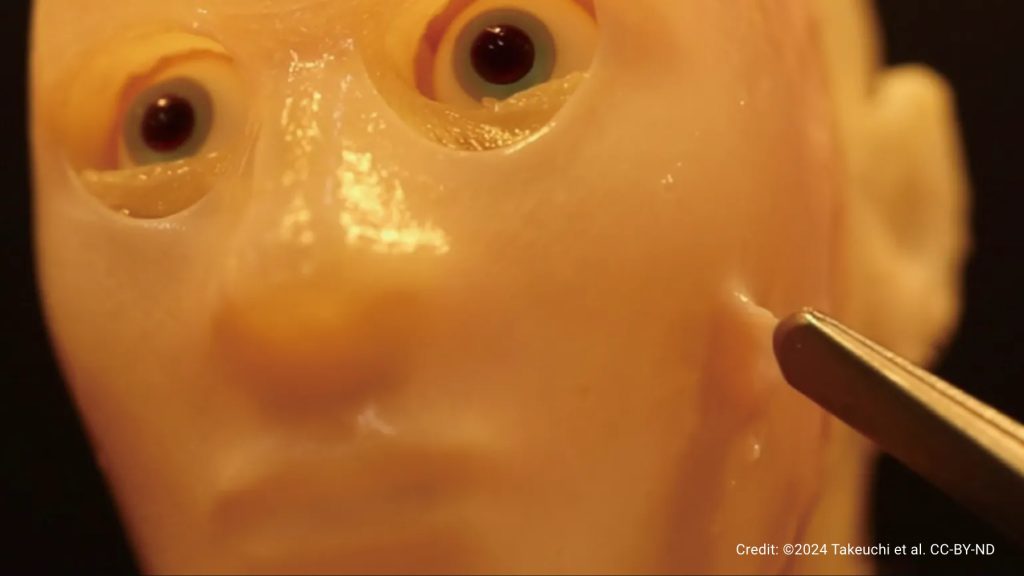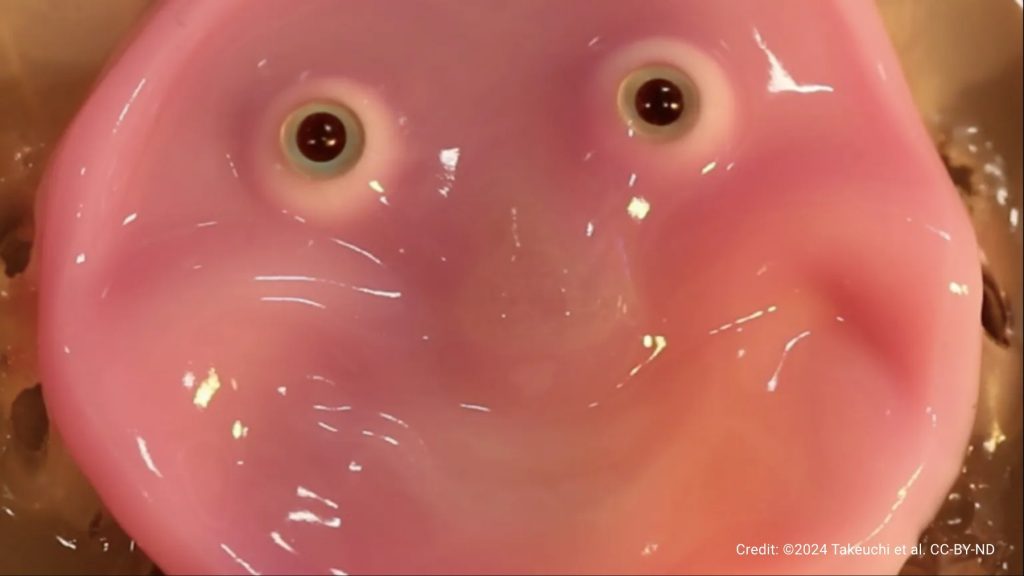
Scientists in Japan have anchored living skin onto robot faces, allowing them to be more expressive.
- For us to accept humanoids that are supposed to look human, they need to look the part without invoking repulsion in the viewer.
- The skin attaches to the underlying hardware with a gel containing collagen, just like how our skin connects to the rest of us.
Japanese scientists figured out how to attach living skin to robot faces, making them look more human with smiles and other facial expressions.
Humanoid robots are supposed to look like us in shape. However, some scientists are taking it a step further, trying to make them look eerily similar. Different cultures created their own interpretation of humanoids. According to Greek mythology and Homer’s Iliad, for example, the Greek god of blacksmithing, Hephaestus, created golden handmaidens, giving them human-like voices to serve as speaking tools or instruments. In the 13th century Middle East, Ismail al-Jazari, a Muslim engineer, designed a waitress robot that appeared out of an automatic door to serve drinks from a liquid reservoir.
It would have been fine if these robots resembled us in passing: two legs, two arms, and a head. Imagine the robots from Will Smith’s iRobot. But as technology advanced, they started looking eerily like us but not quite, triggering an unsettling feeling.

Expressive Robot Faces
Japanese scientists grew living skin in a lab and decided to try to attach it to robot faces in the same way ours is attached. Despite looking like a gel facial mask, the living skin is soft, tear-resistant, and self-healing. They figured that hooks could keep it in place, but the living skin got damaged as the robot’s face moved.
So, these scientists took a page out of their human anatomy books, concluding that they needed to mimic our anatomy. Our skin is attached to the rest of us through a connective tissue network made up of different fibers, including collagen and elastin.
Taking inspiration from how these fibers anchor our skin to what’s underneath, the Japanese scholars poked holes into the robot, including its face, and applied a collagen gel. They then placed the artificial living skin on top.
Why Does It Look Like Me?
For some reason, when something is meant to look and act like us, but something about the way it looks is off, humans start feeling unsettled. This psychological phenomenon is called the uncanny valley.
Think of Madame Tussauds’ Wax Museum. It houses dozens of celebrity wax replicas, but some of them trigger feelings of discomfort, like Meghan Markle’s. It looks like her, but not just quite, be it because of some odd proportion or some other design flaw. Either way, it does not invoke happiness. Au contraire, it’s unsettling.
The feeling intensifies when the robot faces move because we know it’s trying to move like us but failing. Imagine a robot smiling, but the smile doesn’t come close to reaching its eyes. Take a look at these two robots developed by Osaka University.
Notice how when static, they look fine, but once they start moving, they seem like things out of some old Japanese horror movie.
So, with the living skin efficiently anchored into the skin, the robot can make expressions that do not repulse the viewer.
Final Thoughts
As we move toward a future where humanoids are a common occurrence, robot faces moving ‘naturally’ are somewhat needed for us to be more accepting of them. Japan’s scientists are one step closer to achieving the best human aesthetic.
Inside Telecom provides you with an extensive list of content covering all aspects of the tech industry. Keep an eye on our Tech sections to stay informed and up-to-date with our daily articles.